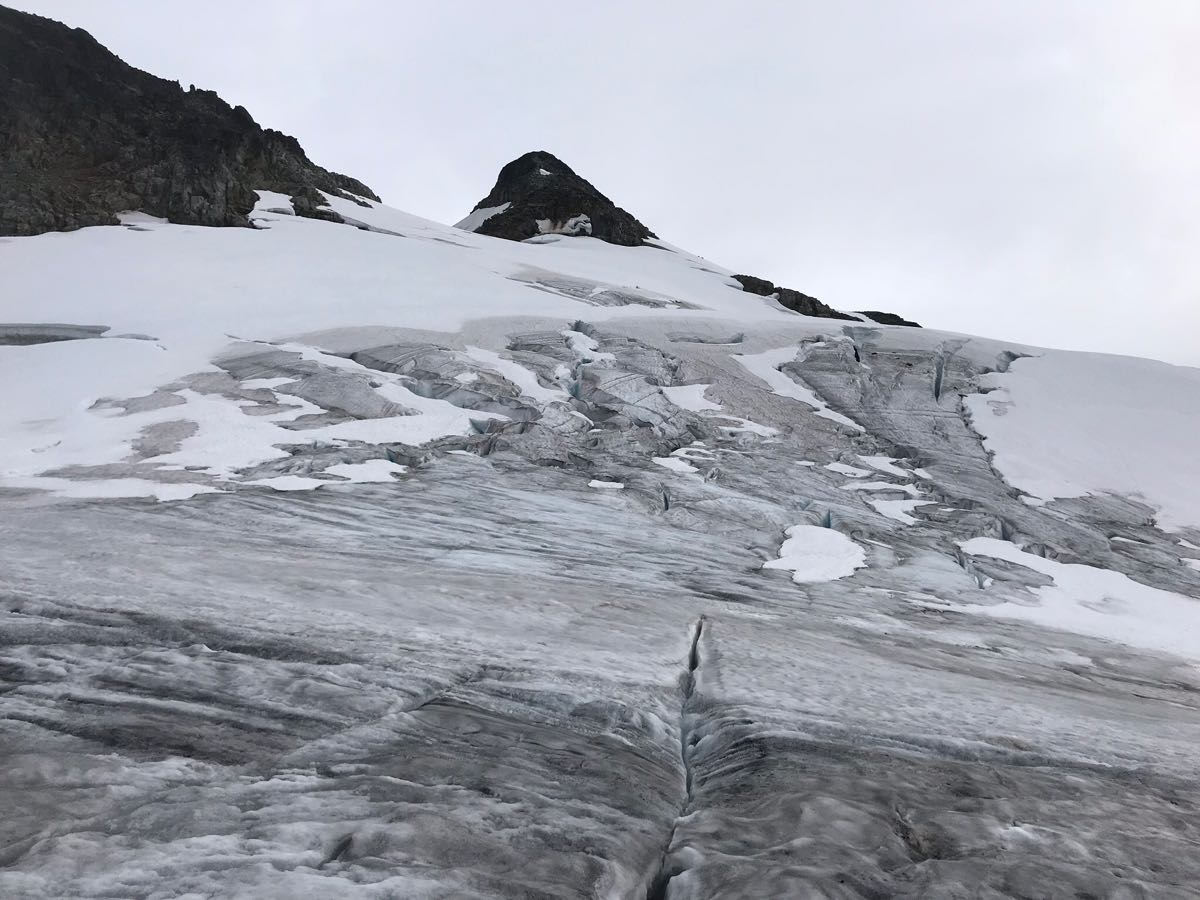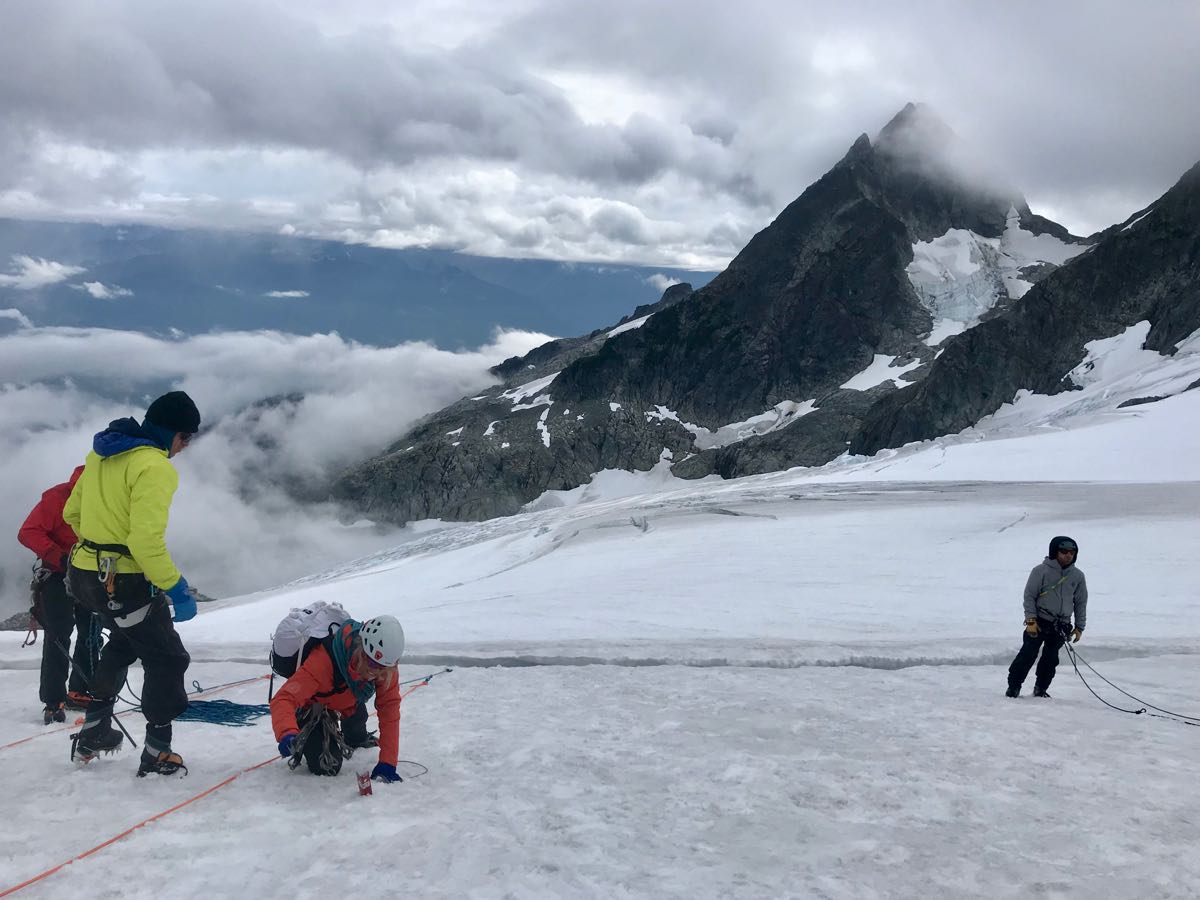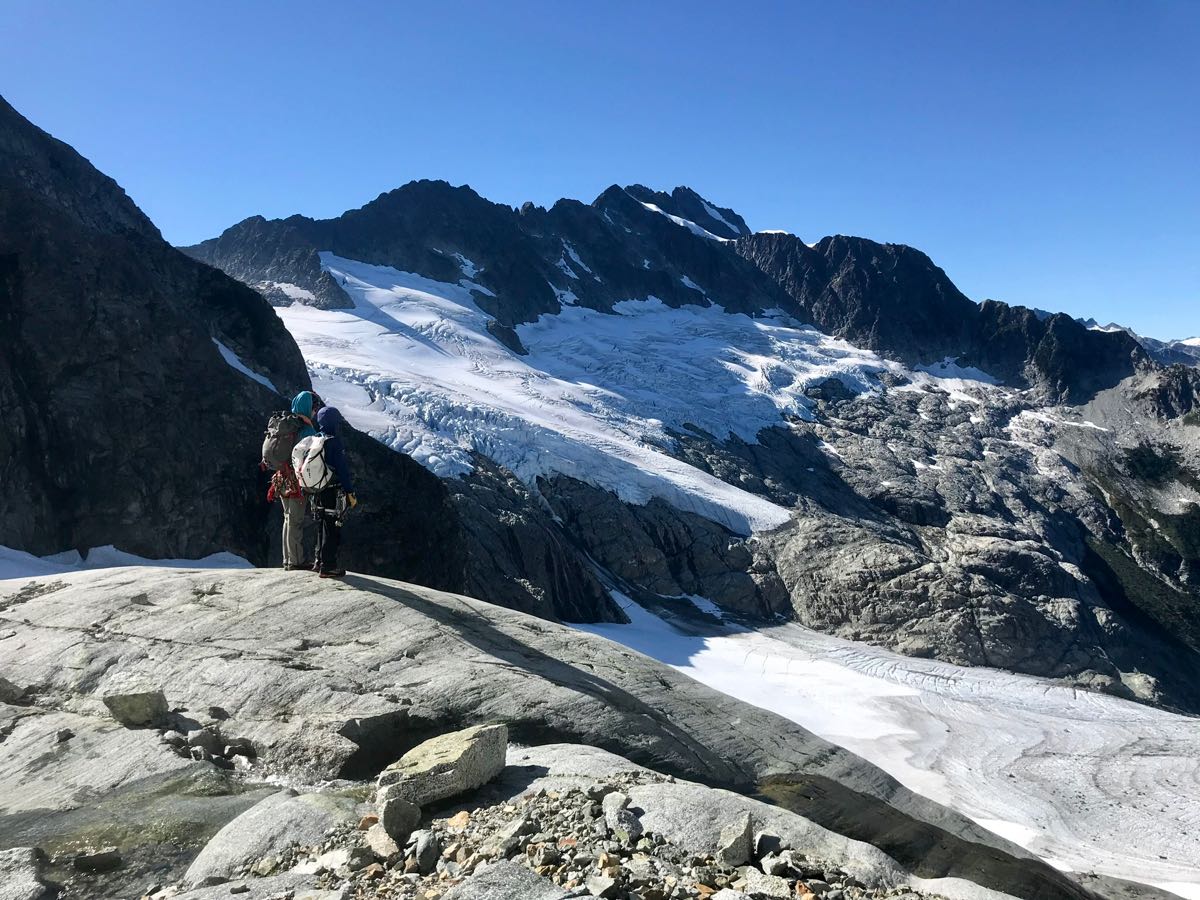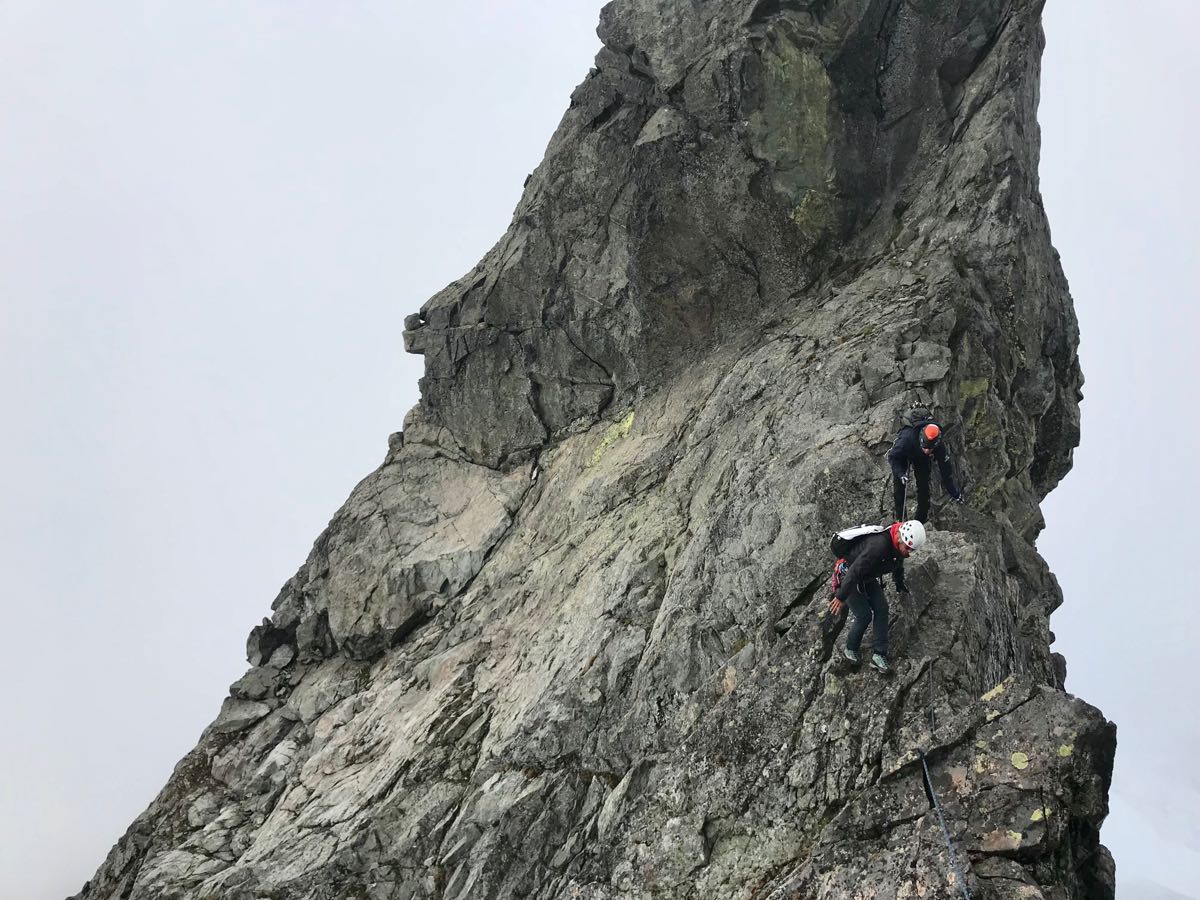A bunch of guides were out training this past week and I figured I’d share some of our observations from the areas we visited.
Matier/Joffre zone: Perhaps due to the large rockfall event this Spring on Joffre’s East side seismically triggering other sides of the mountain, or perhaps just from a wetter-than-usual summer, there seemed to be more fresh loose rock than usual on the ledges around the Matier Icefall Bypass. We observed a higher than usual firn line for this time of year on the Matier Glacier where the snow coverage was eerily thin and very weak, more like Spring snow and even sluffing on slopes steeper than 40-degrees. Most parties had one or two folks poke a foot (I poked in a leg) through some crevasses as we travelled to the Anniversary/Matier col. Most of these crevasses were “ankle biters” but it caused us to walk extra wide around the larger holes we could see. Glacier travel in this zone was on high alert! We ascended the NE Ridge on Matier and the S. Buttress of Joffre just up to the top of the new bolted rappels and back down. Rain and wind flushed us out. (Photos of Matier NE Ridge and Joffre from Matier’s summit)
Tantalus Range: Next we flew into the Haberl Hut for 5 days where we climbed to all the major summits (Alpha via the NW Ridge; Serratus via the Direct N. Face, E. Ridge and Crosmiques Arete; Dione via Dehydrated on Dalwhinnie; Tantalus via the standard route). All the anchors we used were in good shape, many being recently updated with fresh cord. The glaciers are more normal for this time of year than the Joffre zone with generally easy roped glacier travel around the opening crevasses. Moats are big and getting bigger but none required more than minor shenanigans to surmount. Clear nights afforded perfect cramponing in the morning and easy, fast travel sans crampons in the afternoons.
One of our groups had a near miss on Serratus’ N. Face when some large appliance-sized blocks spontaneously melted out of an ablated section of the glacier high above them. These blocks missed them by 10-12m and smashed directly into a moat they’d crossed that morning. Another group observed a rockfall event off the toe of the Serratus Glacier that produced a large dust cloud. We also observed recent evidence of large panels of rock peeling off the mountain sides and depositing thousands of tons of rubble onto the glaciers. And unfortunately one of our teams experienced a climber-generated rockfall event that required SAR to evacuate an injury off Alpha with a longline. There’s been a lot of recent rockfall activity and, as Deryl Kelly said in a recent post from the Rockies, a rain-filled summer is the likely culprit. Generally speaking travel in the alpine is requiring a high level of loose rock management this summer! Things that haven’t melted out before are starting to melt out now due to a below average winter. (Photos of Alpha during crevasse rescue drills, Serratus Glacier from low on Alpha, and Crosmiques Arete)





